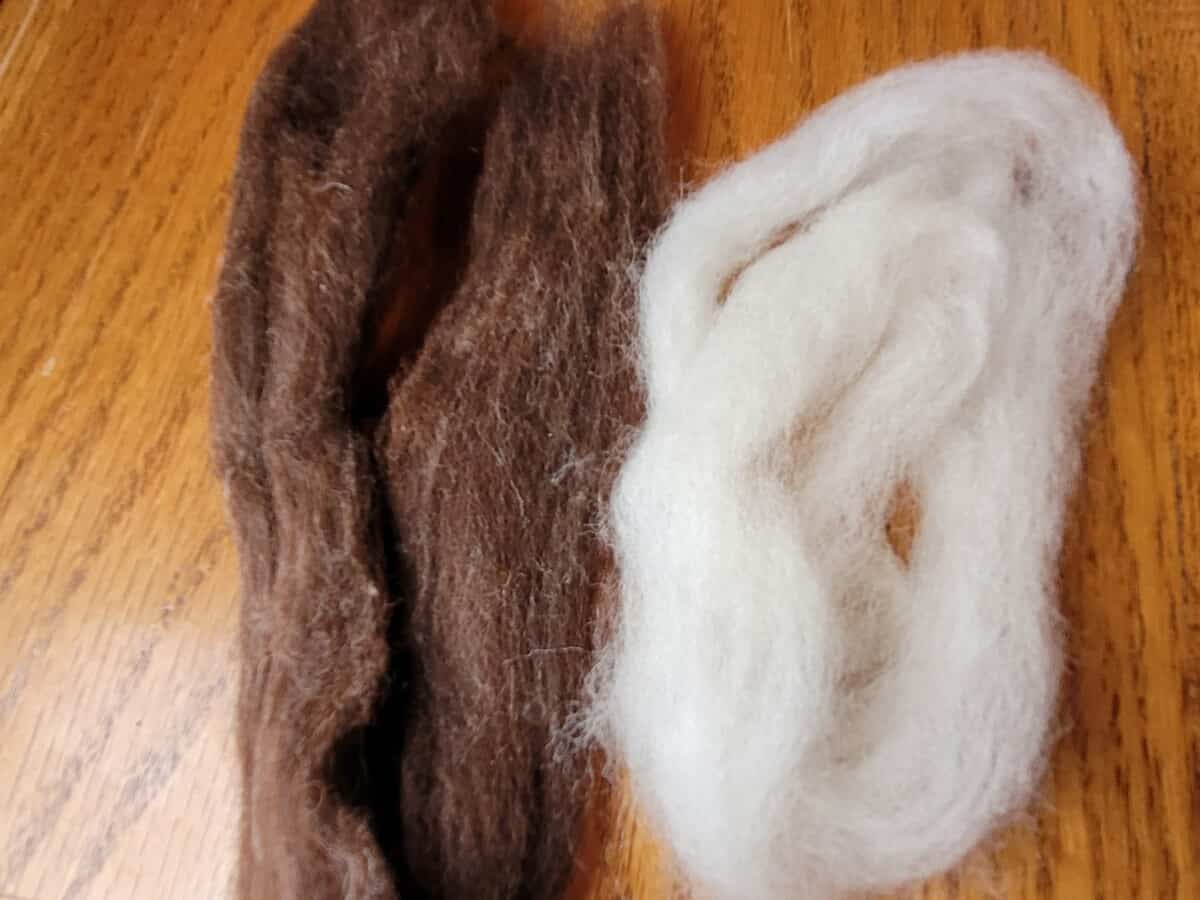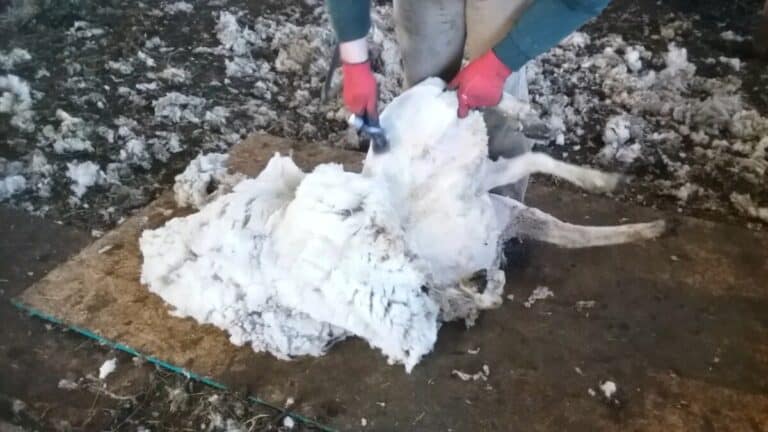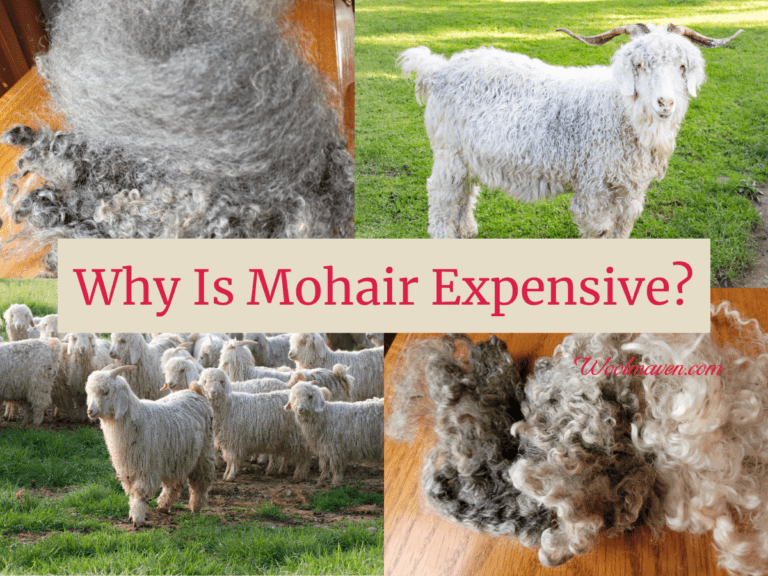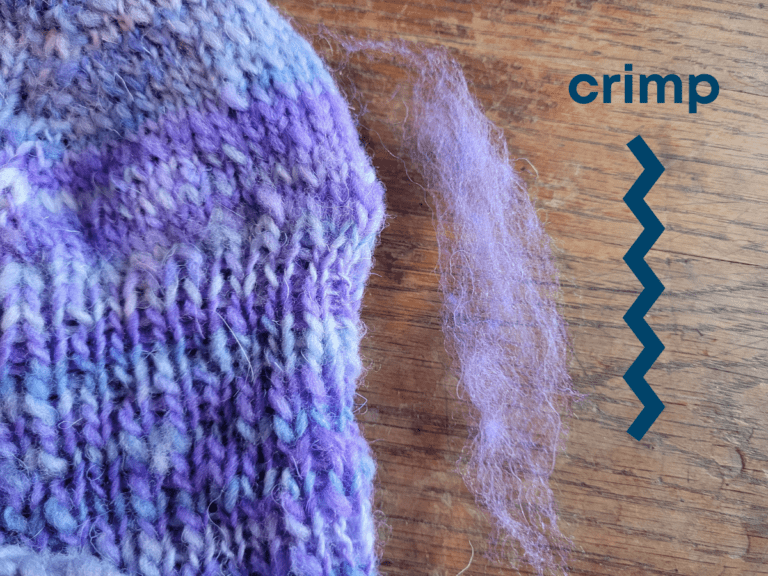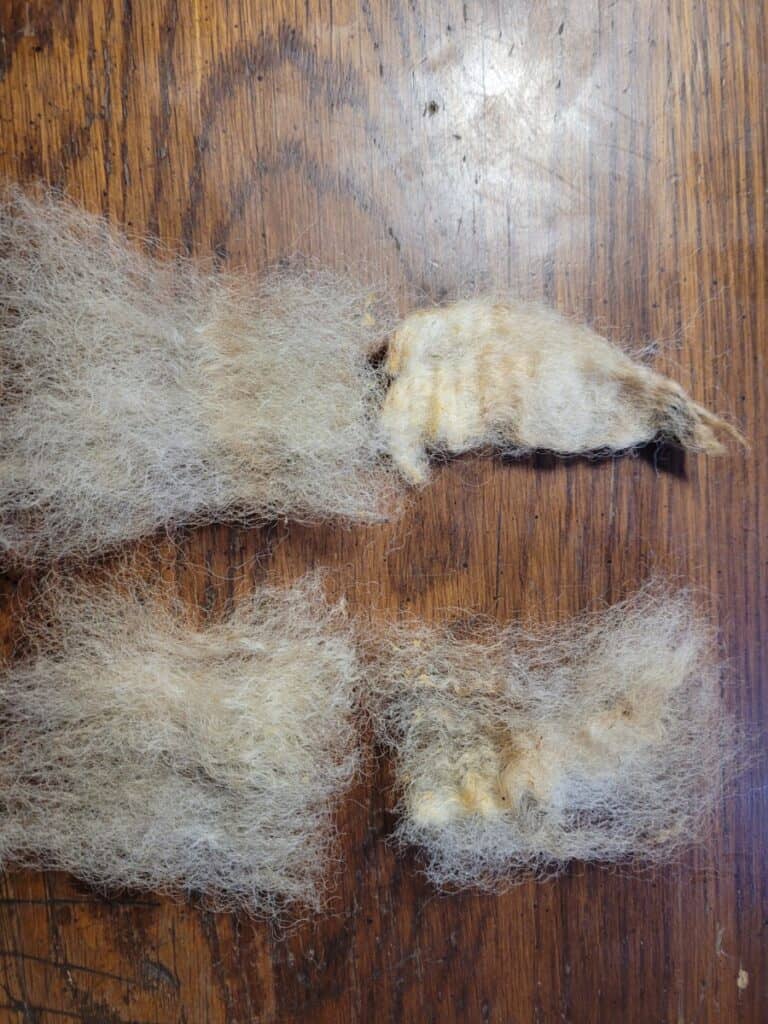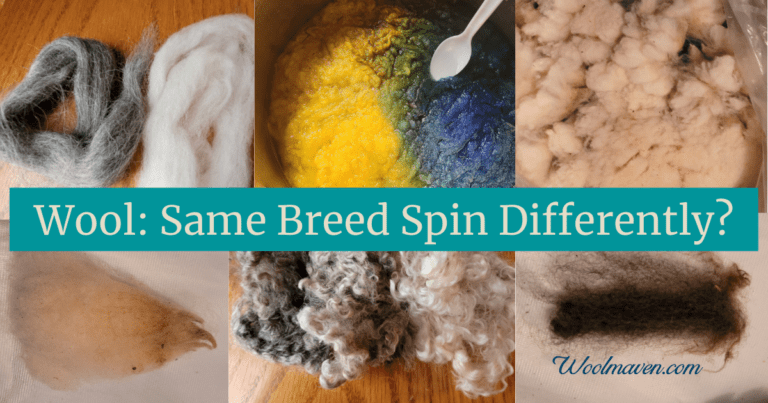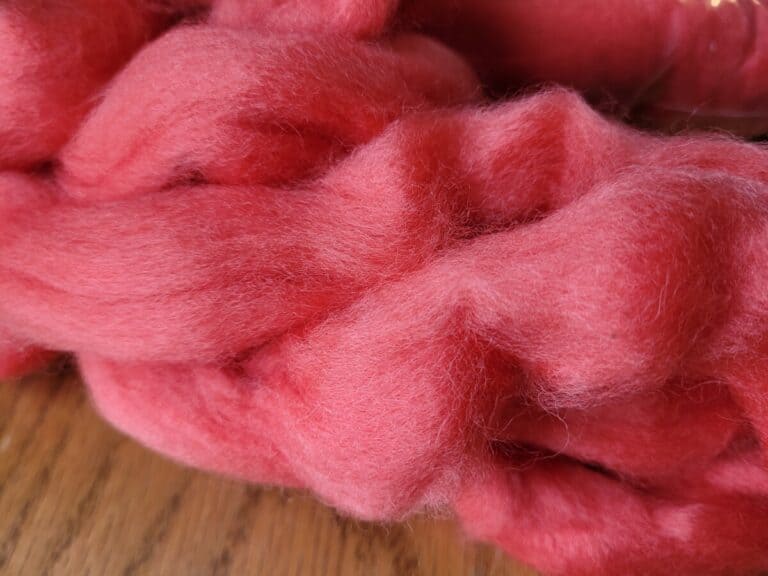How To Choose A Wool That You Will Like To Spin
Choosing your wool to spin, you’ve got a huge number of choices! How do you know what to look for to find the wool that will work the best for you?
Is Spinning Your Own Yarn Worth It? goes over the math of buying vs making wool yarns.
This post contains affiliate links, which means I receive commissions if you choose to purchase through links I provide (at no extra cost to you).
Beginning spinners should start with Corriedale top
If you are completely new to spinning, a flat out beginner, go with an easy to spin medium wool like Corriedale. I would order this bag of Corriedale combed top, it’s less than $20, and get to work!
I know that there are a ton of really neat wools out there for you to choose from, but trust me on this one, go with Corriedale at first.
If for some reason you decide to use a different type of wool, or have something else available for you to spin, be sure to start with wool that has been made into roving.
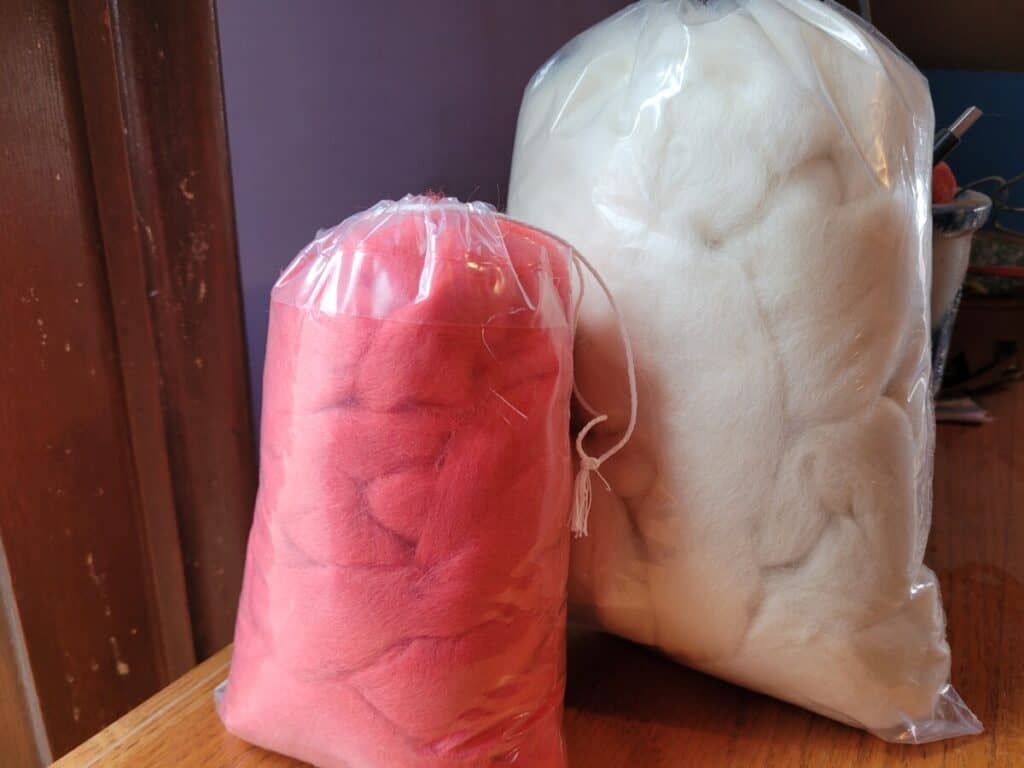
Roving or combed top will be the easiest fiber to spin since it requires the least amount of manipulation from you to get a nice yarn.
If you split the roving into smaller pieces, called slivers, and spin from those it will be even easier to spin.
If you have a touch of spinning experience, or can’t bear the thought of just spinning one kind of wool, you’ll learn to pick an easy to work with wool that will give you a bit of variety, yet be beginner friendly.
7 Best Places To Get Handspinning Wool gives you ideas on sourcing wool for your next project!
What type of spinning are you planning to do?
What type of spinning are you planning to do? By type I mean are you spinning woolen or worsted?
Generally speaking, woolen spinners can go with finer wools and more of a roving preparation to the wool, whereas worsted spinners will use medium to long wools with a combed top preparation.
Looking for a great resource on which fiber to pick and how best to use it? Consider getting The Fleece And Fiber Sourcebook, filled with wonderful pictures and details on just about any wool you can find.
Finer wools to spin
Finer wools that will be wonderful to spin are: Merino, Falkland, Targhee and Polwarth.
These are just a few of the many fine wools available to spin. Look into these and see what other fine wools turn up.
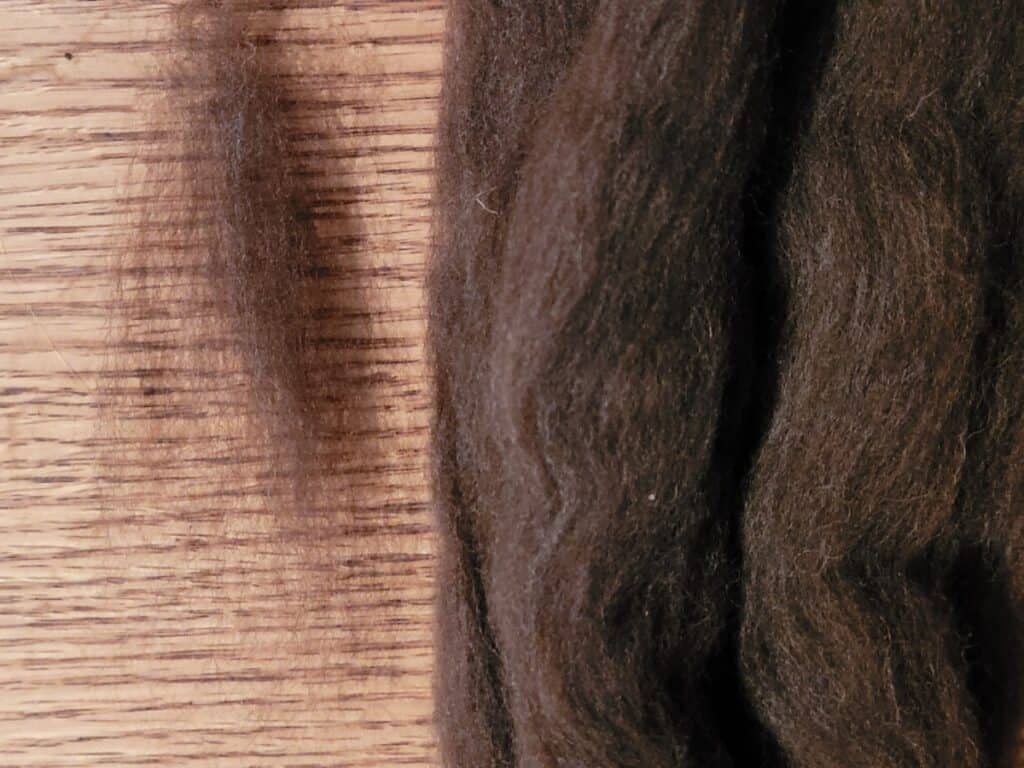
Medium wools to spin (start here)
Medium wools that are great to work with are: Black Welsh Mountain, Corriedale, Shetland and Zwartbles.
These are just a few of the easy to spin medium wools will mention how beginner friendly they are in the description. As long as it has a good staple length, you really can’t go wrong with a medium wool.
If you want more of a softer feel, stick to the finer end of the medium range, definitely below 30 microns. Fiber closer to 26 microns works great for me as an easy to work with but still soft to the skin fiber.
The brown wool above is a Comeback roving that is easy to work with and feels pretty soft when knitted up. It’s a nice in between choice if you want to get your spinning headed toward finer wools.
Longer wools to spin
Long wools have luster for wonderful drape and shine, breeds to try are: Romney, Blue Faced Leicester (shorter staple length but super shine) and Border Leicester.
There are some super wools here and many more breeds to consider, just be careful to read microns to know if the wool is soft enough for your planned use.
Medium wools, like Corriedale, have an easier to spin fiber since they are not as slippery as lustrous fibers, yet have enough length to keep them from getting away from you are you draft out the fibers.
I have to admit, I look at all of the options of wool for sale and want one of each, I really get a kick out of trying new to me wools.
However, as a beginner, go with a 3.5-4 inch medium wool and get comfortable with that, then branch out.
What is the purpose of your spinning project?
Are you trying to make a yarn for a specific purpose or are you trying to work on technique, like keeping an even yarn or learning to ply?
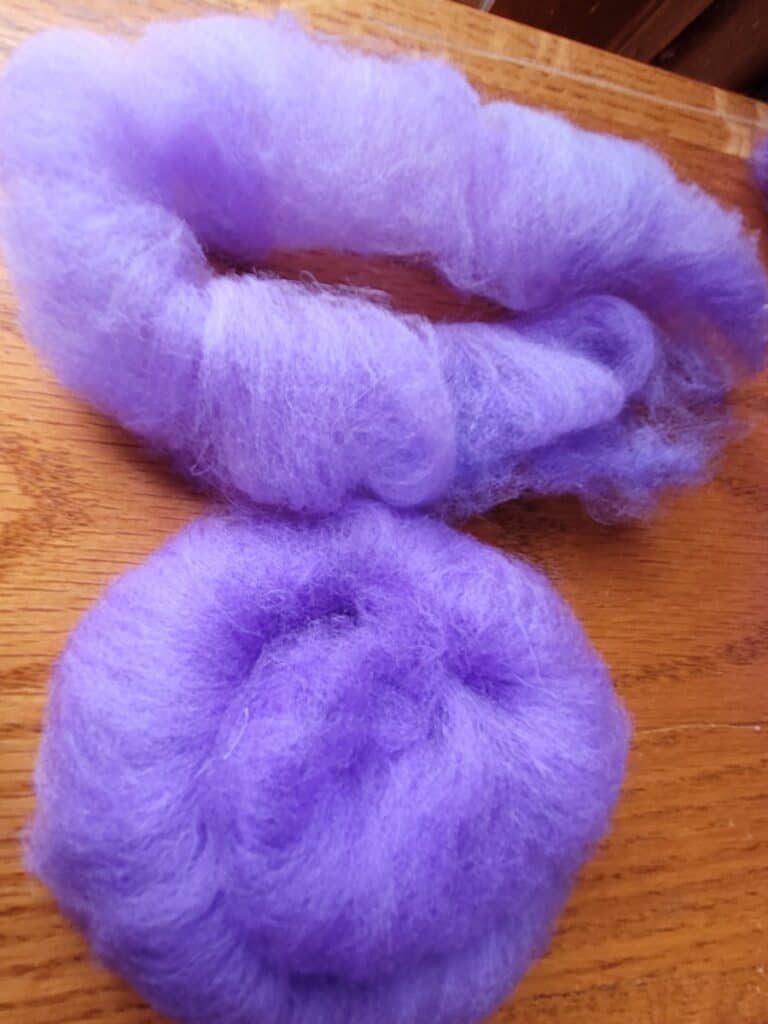
Spinning for fluffier yarn
If you are spinning for a specific purpose, like you want a cozy hat to wear, you are going to want to produce a yarn that has some bounce back and is a bit fluffy, to trap air for insulation.
This project will be best made with a fine or medium fine wool that has some life and spring to it, so your hat will snugly fit your head but also be soft and warm.
Try Merino, Targhee, Rambouillet, Corriedale or Shetland spun woolen.
Spinning for stitch definition
If you want your hat to have more stitch definition, yet still be nice and soft, try any of the above wools, spun worsted, which will make the yarn a bit more defined so your stitch pattern will show more easily.
If your purpose is just putting in the time to get comfortable with the wheel, go with a bulk bag of Corriedale and just get started! Your first few hours will be frustrating.
Your first few yarns will be crazy. You will get better!
Spinning for strong yarns
Maybe you are working on more of a weaving yarn to see about making some colorful rugs?
If that’s the case, you want something that is more about strength and durability than super soft, so go with a hardier wool, like a long wool or one of the more resilient medium wools.
Don’t get me wrong, your rug can still be soft, but it should also be up to the task of being used as a rug, so choose a bit more on durability and staple length than soft.
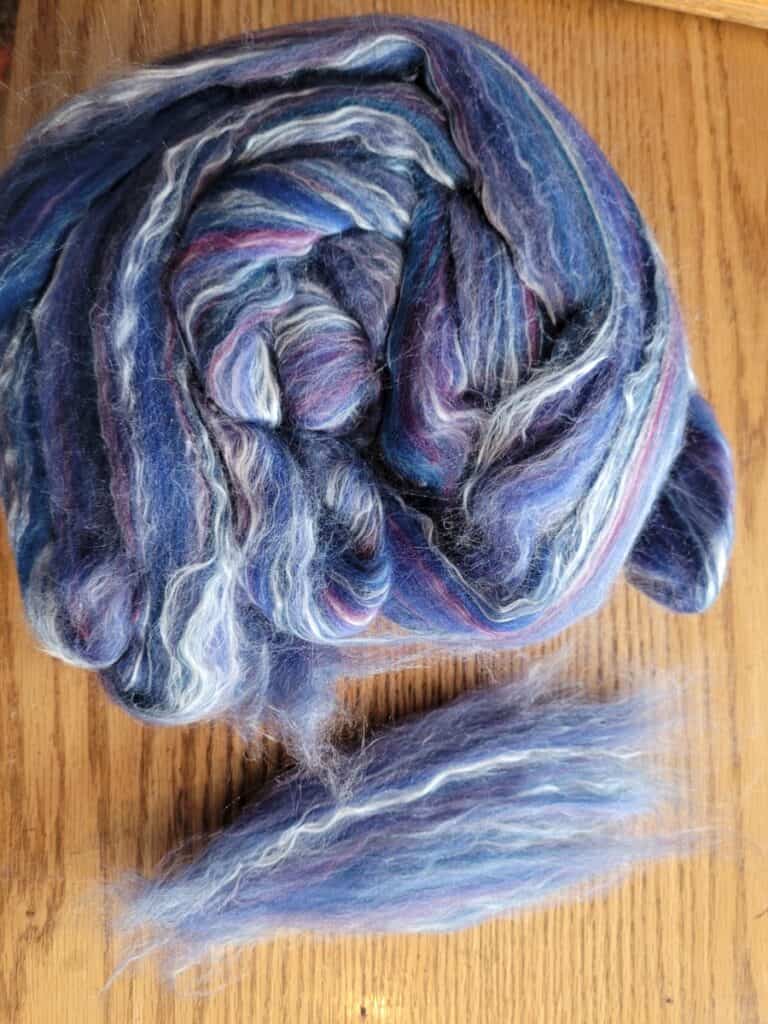
Spinning a wool or fiber blend
Another option is to go with an in between wool, either a blend or wool from a mixed breed sheep.
Blended rovings will give you an in between type yarn, for instance a Mohair blend will give you the strength and wearing ability of Mohair but the body of the wool.
Another example of a blended roving choice would be an Angora/Merino blend, you would get the halo of Angora and the body and spinablitiy of Merino.
Right now I am spinning roving from a Rambouillet/Corriedale cross fleece. Nice stuff, so easy to work with.
I got it as a stepping stone to fine wool spinning, since most of my experience is with medium wools.
Update: I decided to get a more capable wheel, a Schacht Matchless (it’s wonderful) so now I can do more fine spinning and have started to order and spin more in the fine wool options.
Right now, I’m testing out this Merino/silk blend. It’s lovely to work with and I can definitely feel the silk softness and see the sheen.
Wool preparation options
As mentioned above, the easiest wool to spin is top, sometimes also called roving.
Roving is a long thin cloud of fibers that can go in multiple directions, and top is a long river of fiber with all the fibers going in one direction.
Roving and top are a bit different, but for our purposes here, get either, as long as the wool is prepared specifically for spinning.
If you do not care for drafting out your fiber (pulling it out so that it is thin enough to make the yarn thickness you want) you can get pencil roving, which is roving that is split into smaller sections for you.
You could also get pin drafted roving, which is somewhere between roving and top.
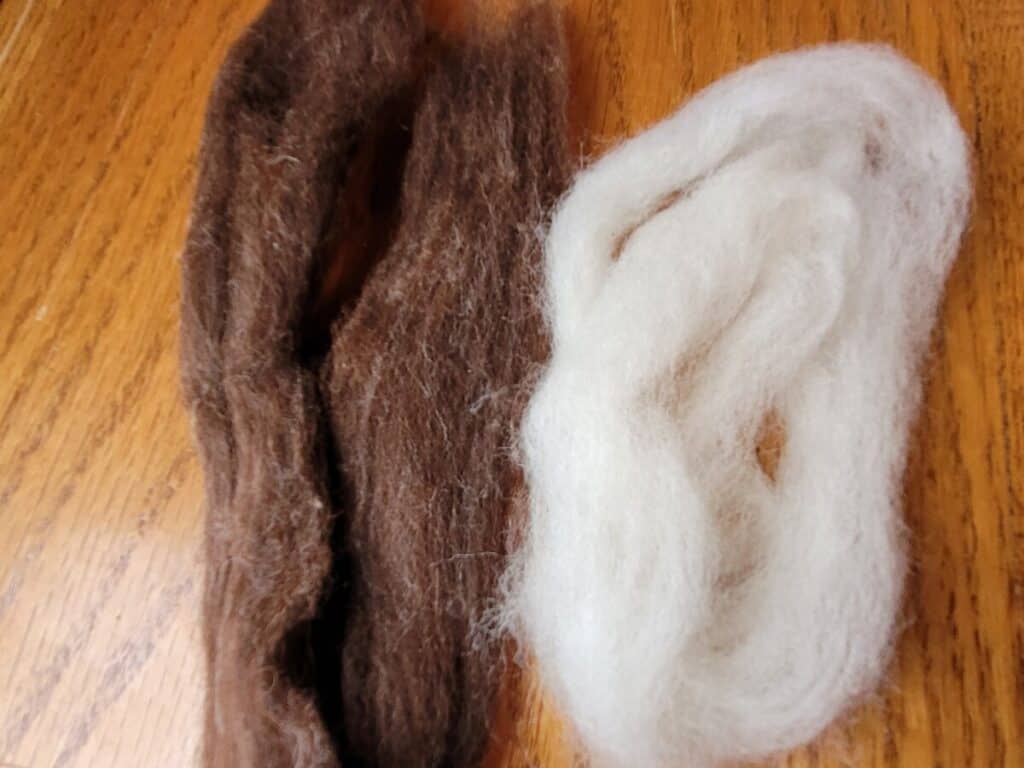
Finally, you may have the option to buy fleeces, washed or raw. Both will require some preparation on your part but can be a great way to get interesting wools to try that are not often commercially available.
I like to buy whole fleeces, raw or washed, so I can see the fleece coloration and work with it as I choose.
However, this is more involved and if you are more into the spinning that the wool preparation, think twice before getting a fleece.
Match what you want to do with the wool you buy
I know that sounds obvious, yet you would be surprised the folks that get a lustrous wool and are surprised that it’s not very stretchy or get a soft fiber that’s not the best wool for hard wearing rugs.
You need to match the wool you buy with the project you are planning on making.
If you are just gaining experience, match the wool to your needs, maybe stretching yourself a bit out of your current competence level.
For example, if you are really getting the hang of spinning your Corriedale roving, try to branch out into Targhee or Rambouillet and see how you like it.
Maybe go longer and try out some Romney or Border Leicester.
Buying wool in person has advantages
If you are able to buy your wool in person, consider it.
The folks who go to fiber festivals and sheep and wool shows are true wool enthusiasts, want you to do well with their wool and are a valuable resource to you.
Ask about the fleeces for sale tell the seller what you are looking for, she’ll know if what she has for sale will be a good match for you or not.
If you are looking for something new to work with, tell the seller the things you tend to like and the things that drive you crazy.
She’ll know if what she has fits the bill or if you would be better off with another fleece.
Jillian Eve is a well known handspinner who has some wool suggestions, her top pick is corriedale, as well!

